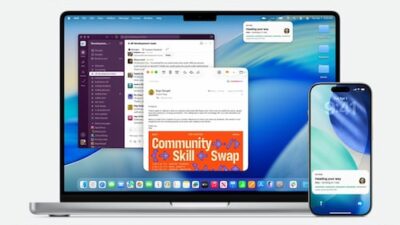Currently in beta and accessible exclusively to existing Arc users on Mac, Dia focuses less on tab management and more on transforming your browser into a personal assistant.
Here’s an overview of what Dia is, what differentiates it, and its significance in the AI era.
What is Dia?
Essentially, Dia is a web browser designed around artificial intelligence. Similar to Chrome or Safari, it aids in internet navigation. However, unlike traditional browsers, it incorporates a built-in AI assistant capable of answering questions, summarizing pages, drafting content, and analyzing multiple tabs simultaneously – all without needing to copy-paste into separate AI applications like ChatGPT or Claude.
Think of it as Chrome paired with a chatbot, one that observes your activities, retains your browsing history, and assists you in real time.
How is Dia different from other browsers?
1. AI is embedded, not an add-on
While many browsers attempt to retrofit AI enhancements — like Google introducing Gemini in Chrome — Dia was developed from scratch with AI at its forefront. Its address bar manages three functions: site navigation, search requests, and AI prompts. It can identify intent and automatically direct your request to the appropriate tool.
2. You can converse with your tabs
The AI in Dia goes beyond mere search capabilities. You can request it to summarize the content of your current tab, retrieve information from various tabs, or reference your browsing history. Planning a trip or comparing products? Dia’s assistant streamlines content across sites and helps you make quicker decisions.
3. Your browser retains memory
Dia has a memory span of up to seven days, allowing it to recall your activities. Its History feature enables the AI to provide more insightful responses based on your recent actions. For instance, if you ask it to draft an email reply, it may incorporate language from previous emails you’ve sent.
4. Skills for personalization
Users can create and utilize “Skills” — mini AI tools designed to automate tasks such as writing, shopping, or scheduling. These skills can interact with specific sites where you’re logged in, leveraging cookies to offer advanced functions like autofilling forms or checking order statuses.
5. It recognizes your logged-in status
In contrast to other AI tools that operate independently, Dia can utilize cookies from logged-in websites. This allows it to access and act upon information from Gmail, Amazon, or Slack without requiring you to reauthenticate or manually input any data.
Why did The Browser Company create this?
CEO Josh Miller stated that the idea stemmed from observing user behavior with AI. “We noticed that before opening an app or searching on Google, people were turning to AI first — asking it to plan their day, summarize notes, or assist with writing,” he shared with The Verge.
The previous product, Arc, had dedicated users but faced challenges in scaling due to its unique design. In contrast, Dia maintains a familiar browser layout like Chrome while seamlessly integrating AI into your online activities.
What about privacy?
With the extensive AI integration and data access, a crucial question arises: how secure is it?
The company asserts that all data is stored and encrypted locally on your device. Any processing carried out on their servers is transient — lasting only “milliseconds” — before being deleted. Features such as cookie access are solely utilized to enhance AI context, not for tracking or profiling user behavior.
So, is Dia the future of browsers?
Perhaps. As tech companies like OpenAI and Perplexity also develop AI browsers, competition is intensifying. What distinguishes Dia is its seamless integration of AI into the browsing experience, ensuring users don’t feel as though they’re using a separate tool.



